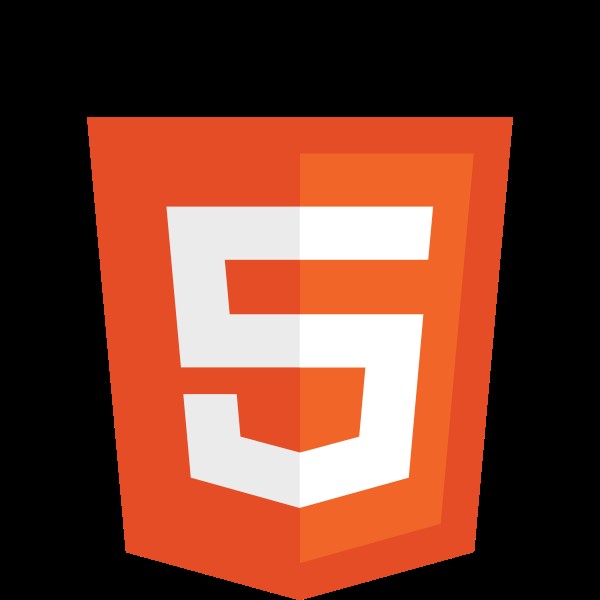Learning How To Learn Web Design is an exciting journey that blends creativity with technical skills. At LEARNS.EDU.VN, we believe everyone can master web design with the right resources and guidance, transforming ideas into interactive online experiences. This article will guide you through the essential steps and resources to become a proficient web designer, equipping you with the knowledge to craft engaging and user-friendly websites. Discover the art of visual design and the functionalities behind stunning websites, understanding the importance of HTML, CSS, and more through this extensive guide.
1. Grasping the Essence of Web Design
Web design is a dynamic field combining artistic vision with technical expertise. Web designers transform abstract concepts into visually appealing and highly functional websites. These websites are crafted to engage users and encourage specific actions, whether purchasing a product, subscribing to a service, or simply exploring content. The art of web design balances creative aesthetics with strategic functionality.
Web design includes multiple disciplines, such as user experience (UX) and user interface (UI) design, as well as search engine optimization (SEO). A well-rounded web designer possesses a strong foundation in each of these areas, ensuring that every site not only looks great but also functions seamlessly and ranks well in search results.
To excel in web design, several skills are crucial:
- Attention to Detail: Designers must meticulously manage every element, ensuring that each aspect aligns with the overarching design and functional goals. Every pixel and line of code should be carefully considered.
- Adaptability: Designers must stay updated with the latest technologies and design trends, adapting to new software and methods.
- Organization: The layout of a website should be intuitive, guiding users through the site effortlessly. Clear navigation and well-structured content are essential.
- Innovation: The best websites combine originality with usability. They capture attention with unique designs while remaining intuitive and easy to navigate.
2. Exploring the Backend: The Engine of a Website
The backend is the foundational structure that supports the functionality of a website. Backend developers are responsible for ensuring that everything runs smoothly behind the scenes, from server operations to database management. These professionals work to make the website functional and efficient.
Websites are hosted on servers, and when a user interacts with a site, the server sends files containing HTML and CSS. Backend developers manipulate these files to optimize the site’s performance and search engine visibility. Their work ensures that the site loads quickly and provides a seamless user experience.
Backend developers often use languages like PHP, Python frameworks like Django, and Java. They also manage SQL databases and other technologies to keep servers, applications, and databases working harmoniously. They ensure that all the underlying technologies support the front-end presentation of the website.
3. Understanding the Frontend: The User’s Interface
The frontend is the part of a website that users directly interact with. It’s where HTML, CSS, and JavaScript combine to create a visual and interactive experience. While the backend handles the behind-the-scenes operations, the frontend focuses on how information is presented to the user. It’s about creating an engaging and user-friendly interface.
Frontend development involves structuring content, designing layouts, and implementing interactive elements that enhance user engagement. It combines visual design with functional interactivity, making the site not only aesthetically pleasing but also easy to use.
4. The Power of Visual Design in Web Design
Effective visual design is what makes a website stand out. While it may seem effortless, great visual design is built on fundamental design principles.
Visual design involves understanding elements like shapes, space, color, and geometry. These components work together to form an appealing and cohesive design. While some designers have a natural talent for visual design, most need to learn and practice these principles to master the art of creating visually stunning websites.
5. Nine Steps to Mastering Web Design
Becoming a web designer involves structured learning and continuous practice. Online courses, tutorials, and design software documentation can provide the necessary knowledge and skills. However, a systematic approach is essential to building a solid foundation.
Here’s a nine-step guide to help you master web design:
5.1. Grasp Key Concepts of Visual Design
Understanding basic artistic principles is crucial for creating visually appealing designs. These principles help designers create balance, harmony, and visual interest. Applying these principles in web design makes a significant difference in the final product.
- Line: Lines are used to create structure, separate elements, and guide the user’s eye. They form borders, dividers, and graphic elements that contribute to the overall layout.
- Shapes: Squares, circles, and triangles are used to create visual interest and communicate different ideas. Squares and rectangles work well for content blocks, circles for interactive buttons, and triangles for icons.
- Texture: Texture can add depth and realism to a design, making it more engaging. From subtle paper-like backgrounds to complex patterns, texture adds a tactile dimension.
- Color: Color theory is essential for creating visually pleasing and emotionally resonant designs. Understanding the color wheel, complementary colors, and the psychological impact of different colors is crucial for creating effective web designs.
5.2. Learn HTML Basics
HTML (HyperText Markup Language) is the foundation of web content. It defines the structure of a website, including text, images, and other elements. While you don’t need to become an HTML expert, understanding its basics is essential.
HTML tags tell the browser how to display content. These tags control headings, paragraphs, links, and images. Key elements include header tags (H1, H2, H3) which create content hierarchy and help web crawlers classify your site, impacting search engine rankings. LEARNS.EDU.VN offers detailed guides on using HTML to structure your web content effectively.
5.3. Understand CSS
CSS (Cascading Style Sheets) controls the styling of HTML elements. It allows you to define fonts, colors, padding, and alignment, creating visually appealing designs. Knowledge of CSS empowers you to customize existing templates and create unique-looking websites.
A CSS class is a set of attributes that style elements. For example, the following CSS code will make all paragraphs on a webpage red:
p {
color: red;
}To apply styles to specific elements, you can create classes:
.red-text {
color: red;
}Then, apply this class to specific HTML elements:
<p class="red-text">This is red text</p>This method allows you to apply specific styles without affecting other elements on your website. At LEARNS.EDU.VN, we provide comprehensive tutorials on CSS styling techniques.
5.4. Master the Foundations of UX Design
UX (User Experience) design focuses on how users experience your website. It considers ease of navigation, visual appeal, and the overall feeling users have while interacting with your site. UX design ensures that the website is intuitive, efficient, and enjoyable.
Essential UX principles include:
- User Personas: Understanding your target audience is critical. User personas help you tailor your design to meet the needs and expectations of your users.
- Information Architecture: Clear and logical organization prevents user confusion. Effective information architecture and content mapping ensure a seamless user journey.
- User Flows: User flows map out how users move through your website, helping you prioritize critical sections and ensure easy access.
- Wireframes: Wireframes outline the placement of headings, text, visuals, and forms. They provide a clear guide for structuring your web pages, whether you’re designing a simple one-page site or a complex multi-page website.
- Prototyping: Prototypes are functioning models of your website. They allow you to test the user experience and gather feedback before launching the final product.
5.5. Become Familiar with UI Design
UI (User Interface) design focuses on the interactive elements of a website. It includes buttons, menus, forms, and other controls that allow users to interact with the site. Effective UI design makes interactions consistent, intuitive, and engaging.
A well-designed UI should be immediately understandable, allowing users to navigate and interact with the website without confusion. By minimizing navigational options, streamlining checkout processes, and integrating interactive elements, you can enhance accessibility and improve the overall user experience. LEARNS.EDU.VN offers numerous resources on UI best practices.
5.6. Understand Basic Layouts
Utilizing familiar design patterns makes websites more accessible and intuitive. Users rely on these patterns to navigate websites efficiently. Understanding common web design patterns will help you create websites that flow smoothly.
The Z-pattern and F-pattern are two of the most common reading paths on websites:
- Z-Pattern: This pattern is effective for landing pages and other designs with ample negative space. The user’s eye naturally follows a Z-shaped path across the screen.
- F-Pattern: This pattern is common in text-heavy designs like blogs and online publications. Users tend to scan the top and left side of the page, creating an F-shaped pattern.
Knowing these patterns allows you to strategically place content to maximize user engagement.
5.7. Learn About Typography
Typography plays a critical role in web design, influencing readability and evoking emotions. The tasteful use of stylized typography enhances the overall aesthetic of a website.
There are three basic types of typefaces:
- Serif: Typefaces with small decorative lines (serifs) on each letter.
- Sans Serif: Typefaces without serifs, offering a cleaner and more modern look.
- Display: Typefaces used for headlines, designed to grab attention with unique and impactful designs.
Selecting the right typeface can significantly enhance the visual impact and readability of your website.
5.8. Put Knowledge Into Action: Build Something
The best way to learn web design is by doing. Start with simple projects, such as creating a blog. This hands-on experience will teach you how to use a content management system (CMS) and apply the design principles you’ve learned. Blogs are popular with clients seeking to improve their search engine rankings, making this a valuable practice project.
Select the right design tools from the outset to avoid having to relearn a new tool later. LEARNS.EDU.VN recommends exploring various platforms to find one that suits your style and needs.
5.9. Find a Mentor
Mentors provide invaluable guidance and support. They offer feedback on your work, help you identify strengths and weaknesses, and share insights from their own experiences. Look for mentors who specialize in the type of design you admire and want to learn.
6. Choosing the Right Platform
Selecting the right platform is crucial for your web design journey. Various platforms offer different features and capabilities, catering to both beginners and advanced users. The right platform can significantly streamline your workflow and enhance your creative potential.
Consider these factors when choosing a platform:
- Ease of Use: The platform should be intuitive and easy to learn, especially for beginners.
- Customization Options: The platform should offer ample customization options to create unique and visually appealing designs.
- CMS Capabilities: A robust CMS (Content Management System) simplifies content management and collaboration.
- Integration with Other Tools: The platform should integrate seamlessly with other design and development tools.
7. Resources at LEARNS.EDU.VN
At LEARNS.EDU.VN, we offer a wide range of resources to help you master web design:
- Comprehensive Tutorials: Our tutorials cover everything from HTML and CSS basics to advanced UX and UI design principles.
- Expert Articles: Our articles provide in-depth insights into the latest web design trends and techniques.
- Online Courses: Our online courses offer structured learning paths tailored to different skill levels.
- Community Forums: Connect with other learners, share your work, and get feedback from experienced designers.
8. Staying Updated with Web Design Trends
The field of web design is constantly evolving. Staying updated with the latest trends and technologies is crucial for maintaining a competitive edge.
Here are some strategies for staying updated:
- Read Industry Blogs and Publications: Follow leading web design blogs and publications to stay informed about the latest trends.
- Attend Conferences and Workshops: Participate in industry conferences and workshops to learn from experts and network with other professionals.
- Follow Influencers on Social Media: Follow influential web designers on social media to get inspired and learn new techniques.
- Experiment with New Tools and Technologies: Don’t be afraid to try out new tools and technologies to expand your skill set.
9. Building a Portfolio
A strong portfolio is essential for showcasing your web design skills and attracting clients or employers. Your portfolio should highlight your best work and demonstrate your ability to create visually appealing and functional websites.
Here are some tips for building a compelling portfolio:
- Showcase a Variety of Projects: Include a range of projects to demonstrate your versatility.
- Highlight Your Role in Each Project: Clearly describe your role and contributions to each project.
- Include Case Studies: Detailed case studies can showcase your problem-solving skills and design process.
- Get Feedback from Others: Ask for feedback from mentors, peers, and potential clients to refine your portfolio.
10. Web Design Trends for 2024
| Trend | Description | Benefits | Examples |
|---|---|---|---|
| Dark Mode | Dark color schemes reduce eye strain and save battery life on OLED screens. | Improved user experience, especially in low-light conditions; energy savings. | Websites offering a toggle between light and dark themes. |
| Minimalism | Clean and simple designs that focus on essential content and functionality. | Faster loading times, improved usability, and a focus on key messages. | Simple layouts with ample white space and limited use of colors and images. |
| Interactive Elements | Engaging elements like animations, micro-interactions, and scrolling effects that enhance user engagement. | Increased user engagement, longer time on site, and a more memorable experience. | Animated buttons, interactive infographics, and parallax scrolling effects. |
| AI in Web Design | Using AI-powered tools for tasks like content generation, layout design, and user behavior analysis. | Increased efficiency, personalized user experiences, and data-driven design decisions. | AI-powered chatbots, automated content creation tools, and predictive analytics dashboards. |
| Inclusive Design | Designing websites that are accessible to users with disabilities, ensuring equal access and usability. | Broader audience reach, improved user experience for all users, and compliance with accessibility standards like WCAG. | Websites with proper alt text for images, keyboard navigation, and clear contrast ratios. |


FAQ: How to Learn Web Design
1. What is web design?
Web design is the process of planning, creating, and updating websites. It involves various aspects, including layout, color schemes, typography, and user experience, to create visually appealing and functional websites.
2. How long does it take to learn web design?
The time it takes to learn web design varies depending on your learning pace and goals. You can learn the basics in a few months with consistent effort. Becoming proficient and staying updated with the latest trends may take several years of practice and continuous learning.
3. Do I need a degree to become a web designer?
No, a degree is not always necessary. Many successful web designers are self-taught or have completed online courses and boot camps. A strong portfolio and practical skills are more important than a formal degree.
4. What are the essential skills for web design?
Essential skills include HTML, CSS, JavaScript, UX design principles, UI design principles, and knowledge of design tools like Adobe XD or Sketch. Strong problem-solving skills, creativity, and attention to detail are also crucial.
5. How can I practice web design?
Practice by building personal projects, redesigning existing websites, and contributing to open-source projects. Participate in design challenges and seek feedback from mentors and peers.
6. What are the best online resources for learning web design?
LEARNS.EDU.VN, Coursera, Udemy, and freeCodeCamp are excellent online resources. These platforms offer comprehensive courses, tutorials, and community support to help you learn web design.
7. How do I create a web design portfolio?
Showcase your best projects in a well-organized and visually appealing portfolio. Include descriptions of your role, design process, and the results achieved. Use your portfolio website to demonstrate your skills and creativity.
8. What are the latest trends in web design?
Latest trends include dark mode, minimalism, interactive elements, AI in web design, and inclusive design. Staying updated with these trends can help you create modern and engaging websites.
9. How important is mobile-first design?
Mobile-first design is crucial because a significant portion of web traffic comes from mobile devices. Designing for mobile first ensures that your website is responsive, user-friendly, and accessible on all devices.
10. How can I stay motivated while learning web design?
Stay motivated by setting achievable goals, celebrating small successes, and joining a community of learners. Seek inspiration from other designers, participate in design challenges, and focus on projects that excite you.
Conclusion
Embarking on the journey of learning web design can be both challenging and rewarding. By following these steps and utilizing the resources available at LEARNS.EDU.VN, you can build a strong foundation and develop the skills needed to excel in this dynamic field. Remember to stay curious, practice consistently, and never stop learning.
Ready to transform your ideas into captivating web experiences? Explore LEARNS.EDU.VN today for comprehensive courses and resources that will guide you every step of the way. From mastering the fundamentals to staying ahead of the latest trends, we provide the tools and knowledge you need to succeed.
Contact us today to learn more:
Address: 123 Education Way, Learnville, CA 90210, United States
WhatsApp: +1 555-555-1212
Website: learns.edu.vn
